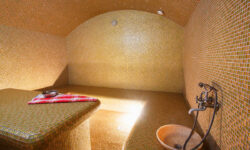Ultrasonic Testing Procedure
Ultrasonic testing is a non-destructive testing (NDT) method used to detect and measure defects in materials, structures, and equipment. It involves the use of high-frequency sound waves to penetrate the test object and identify any internal flaws or defects. This technique is widely used in industries such as aerospace, automotive, construction, and manufacturing to ensure the quality and safety of products.
Step 1: Equipment and Calibration
The first step in ultrasonic testing is to ensure that the equipment is calibrated and ready for use. This involves checking the calibration blocks and adjusting the settings of the ultrasonic equipment to match the test requirements. The calibration blocks are used to check the accuracy and sensitivity of the equipment and ensure that the results are within the acceptable range.
Step 2: Preparation of the Test Object
The next step is to prepare the test object for ultrasonic testing. This involves cleaning the surface of the object and removing any debris or contaminants that could interfere with the sound waves. It is essential to ensure that the test object is free from any surface irregularities or roughness that could affect the accuracy of the results.
Step 3: Coupling
The third step in ultrasonic testing is to apply a coupling medium to the surface of the test object. The coupling medium is a substance that helps to transmit the sound waves between the transducer and the test object. This can be a gel, oil, or water, depending on the type of test and the material being tested. The coupling medium should be evenly distributed over the surface of the test object to ensure good contact between the transducer and the object.
Step 4: Scanning
The next step in ultrasonic testing is to scan the test object with the transducer. The transducer emits high-frequency sound waves into the test object, which bounce off any internal defects and are reflected back to the transducer. The reflected sound waves are then recorded and analyzed to determine the location, size, and shape of any defects in the test object.
Step 5: Analysis
The final step in ultrasonic testing is to analyze the data collected during the scan. This involves interpreting the sound waves and identifying any defects or anomalies in the test object. The results are then compared to the acceptance criteria to determine if the test object meets the required standards.
Factors Affecting the Accuracy and Reliability of Ultrasonic Testing
There are several factors that can affect the accuracy and reliability of ultrasonic testing. These include:
- Operator Skill and Training – Ultrasonic testing requires skilled operators who are trained to use the equipment and interpret the results accurately.
- Equipment Calibration – The accuracy and sensitivity of the equipment can affect the results, so it is essential to ensure that the equipment is calibrated correctly.
- Coupling Medium – The type and consistency of the coupling medium can affect the transmission of sound waves and the accuracy of the results.
- Surface Preparation – The surface of the test object must be prepared correctly to ensure that there are no surface irregularities or contaminants that could interfere with the sound waves.
- Object Geometry – The shape and size of the test object can affect the accuracy of the results, especially if the object has complex geometry.
- Material Properties – The type of material being tested can affect the transmission of sound waves and the accuracy of the results.
- Temperature – Temperature changes can affect the speed of sound waves and the accuracy of the results, so it is essential to consider the temperature of the test object during testing.
- Thickness – The thickness of the test object can affect the penetration of sound waves and the accuracy of the results.
- Type of Defect – The type of defect being detected can affect the accuracy of the results. Some defects may be easier to detect than others, depending on their size, shape, and location.
- Acceptance Criteria – The acceptance criteria for ultrasonic testing can vary depending on the industry and application. It is essential to ensure that the acceptance criteria are appropriate for the test object and that they are applied consistently.
Frequently Asked Questions
What materials can be tested using ultrasonic testing?
Ultrasonic testing can be used to test a wide range of materials, including metals, plastics, composites, ceramics, and glass.
How deep can ultrasonic testing penetrate?
The depth of penetration depends on the frequency of the sound waves and the properties of the material being tested. Higher frequencies have less penetration depth than lower frequencies.
What types of defects can ultrasonic testing detect?
Ultrasonic testing can detect a variety of defects, including cracks, voids, inclusions, and delaminations.
What is the difference between pulse-echo and through-transmission ultrasonic testing?
Pulse-echo testing involves sending a sound wave into the test object and measuring the time it takes for the wave to bounce back to the transducer. Through-transmission testing involves sending a sound wave through the test object and measuring the attenuation of the wave.
How long does ultrasonic testing take?
The time required for ultrasonic testing depends on the size and complexity of the test object, as well as the type of defect being detected. In general, ultrasonic testing can be completed relatively quickly.
Is ultrasonic testing destructive?
No, ultrasonic testing is a non-destructive testing method that does not damage the test object.
Is ultrasonic testing safe for humans?
Ultrasonic testing is generally safe for humans, as long as appropriate safety procedures are followed. The sound waves used in ultrasonic testing are high frequency and outside the range of human hearing.
How often should ultrasonic testing be performed?
The frequency of ultrasonic testing depends on the industry and application. In general, testing is performed at regular intervals to ensure that the test object remains in good condition.
What are the advantages of ultrasonic testing?
Ultrasonic testing is a non-destructive testing method that is fast, accurate, and reliable. It can detect defects that may not be visible to the naked eye and can be used on a wide range of materials.
What are the limitations of ultrasonic testing?
Ultrasonic testing may not be suitable for certain types of materials, such as highly attenuating materials. It also requires skilled operators and appropriate equipment calibration to ensure accurate results.



